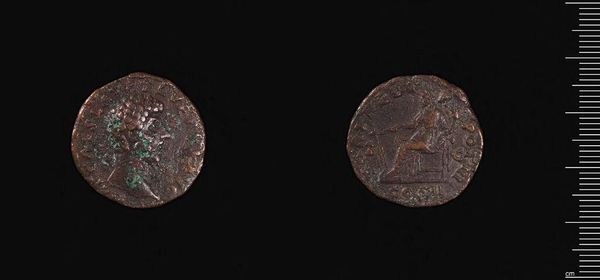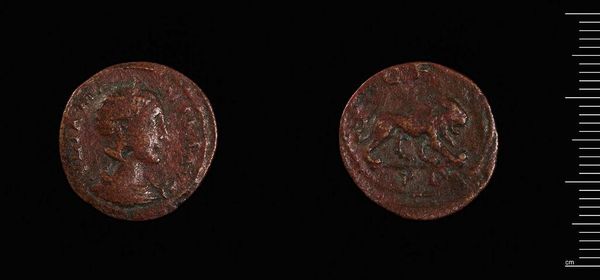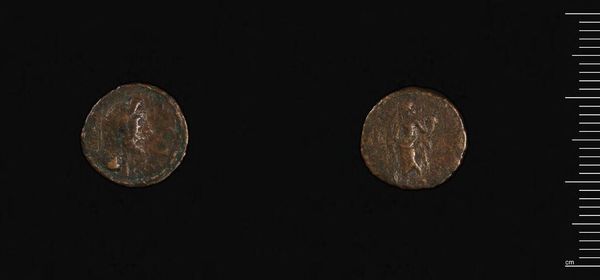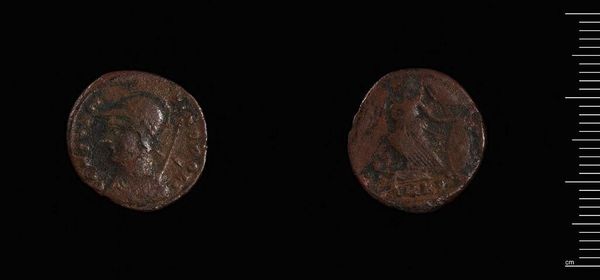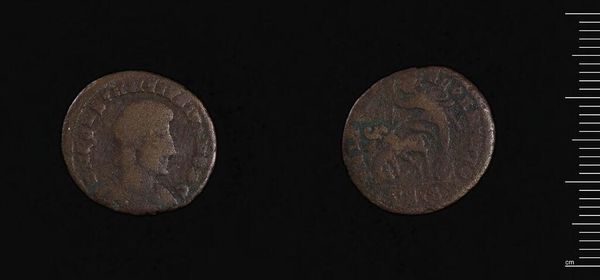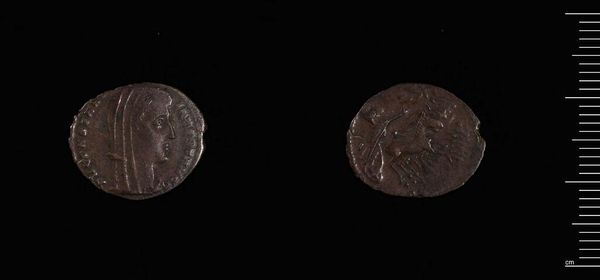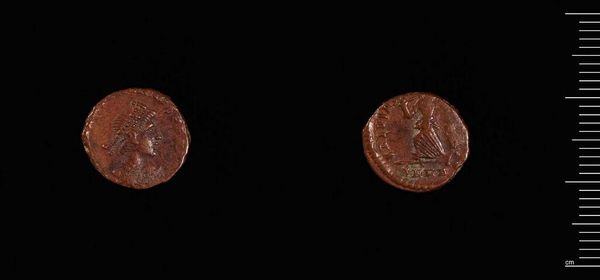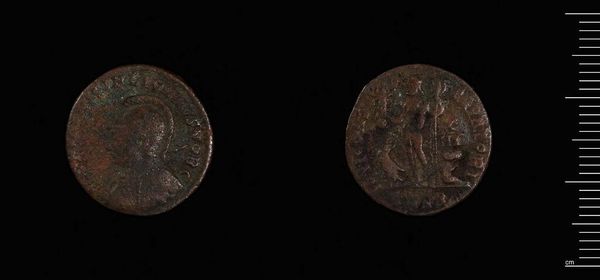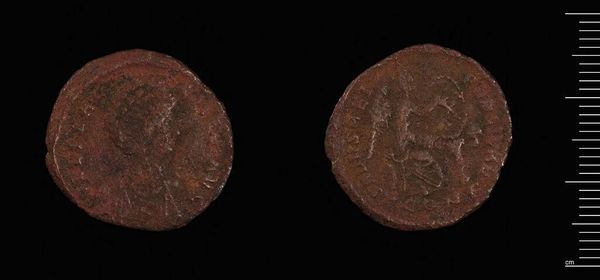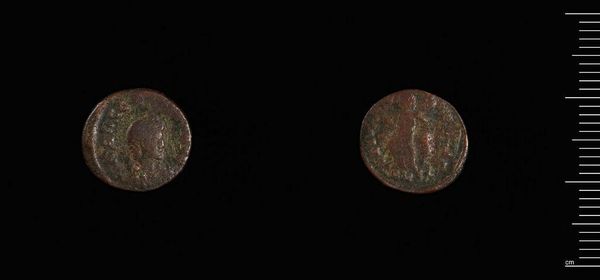
Dimensions: 1.42 g
Copyright: CC0 1.0
Editor: Here we have an AE4 coin of Constantius II from Siscia. It seems so small and worn, yet it must have been important to someone. What does its existence tell us about the time it was made? Curator: This coin, seemingly insignificant, is a powerful artifact of the late Roman Empire under Constantius II. Minted in Siscia, now part of Croatia, it speaks to the empire's vast economic and administrative reach, doesn't it? Editor: Yes, it does. Curator: Consider the imagery. What do you see, and what might it have communicated to the public? Editor: I can make out a portrait of the emperor, and on the reverse, maybe an eagle or a military standard? It feels like propaganda, a way to project power. Curator: Precisely. Coins were tools of imperial messaging. The portrait legitimized the ruler, and the reverse imagery reinforced the state's military strength and divine favor. Do you think this would have succeeded? Editor: I do. It's fascinating how something so small could carry so much weight. Curator: Exactly! It highlights the public role of art and the politics embedded within even everyday objects.
Comments
No comments
Be the first to comment and join the conversation on the ultimate creative platform.
